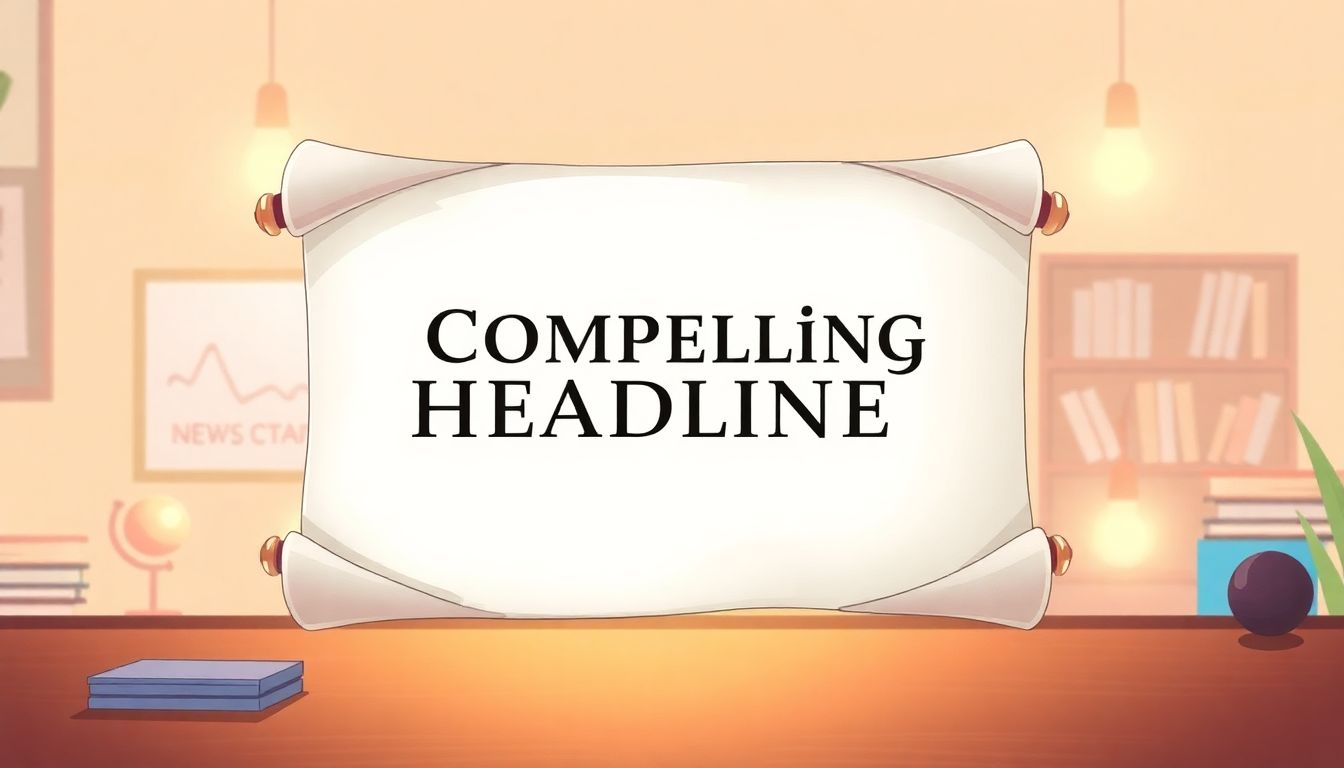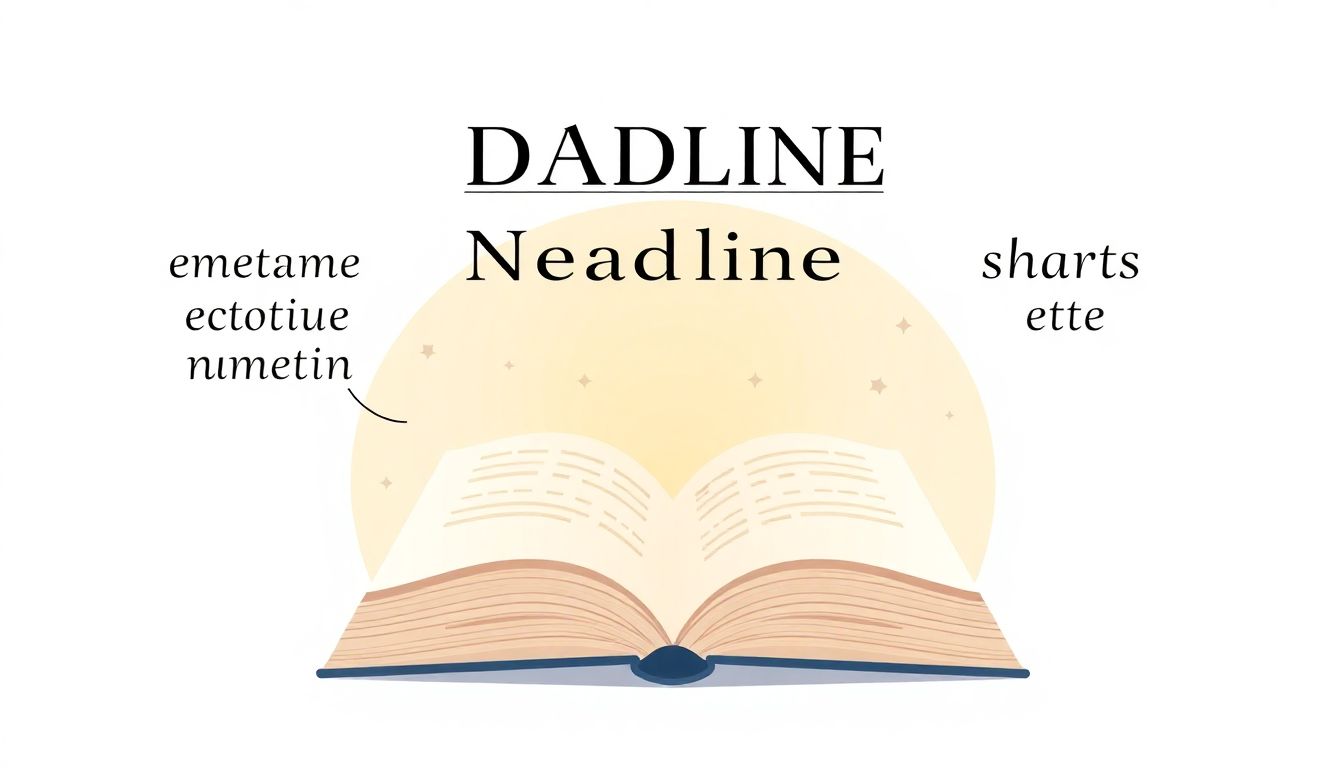We all know the frustration of spending hours working on amazing content, only to watch readers just scroll by because the headline didn’t hook them. Writing headlines that actually grab readers isn’t easy.
But here’s the good news—by following some simple tips, you’ll start grabbing more clicks, boosting your reader engagement, and maybe even making your content go viral. Stick around, and you’ll learn exactly how to craft headlines that folks can’t resist.
Ready to fix those dull headlines once and for all? Let’s get started.
Key Takeaways
- Write short, clear headlines that immediately tell readers what they’ll get.
- Use numbers and lists like “7 Easy Ways” to instantly capture attention and increase clicks.
- Include your main keyword naturally near the start of the headline to improve SEO.
- Add strong action verbs (improve, boost, master) to encourage reader clicks.
- Make headlines emotional or spark curiosity to connect with readers.
- Avoid clichés (e.g., “Ultimate Guide”), and keep it fresh and genuine.
- Test multiple headline versions to discover what’s most effective.
- Use tools like Google Analytics to check headline performance regularly and adjust accordingly.

Step 1: Write Clear and Specific Headlines
Want to know the first secret to writing effective headlines that actually get clicks? Keep your headlines clear, specific, and direct. People scroll fast and skim quicker, so your headline has to instantly tell them what they’re getting if they click.
Instead of vague headlines like “Make Your Blog Popular,” go for something specific—like “7 Easy Ways to Double Your Blog Traffic in 30 Days.” When readers immediately understand what to expect, they’re much more likely to click through.
A smart trick is to write down the exact benefit the reader will get from your article, and then turn that into your headline. For example, if your article teaches people how to self-publish, use “9 Steps to Self-Publish Your Book without an Agent” rather than “Everything You Should Know About Publishing.” Check out this helpful article on how to get a book published without an agent for some inspiration.
Step 2: Include Relevant Keywords for SEO
Writing friendly headlines is great, but writing friendly headlines that get found by search engines—now that’s the sweet spot. Keywords aren’t just buzzword filler; they signal to Google exactly what your content is about, helping you rank higher.
Start by figuring out the main keyword that’s right for your topic. Let’s say you’re putting together a post for teenagers learning to write realistic fiction. You might use the headline “11 Realistic Fiction Writing Prompts Teens Will Love.”
But please, don’t stuff keywords awkwardly (no one likes spammy-sounding headlines). Instead, slide your main keyword in naturally—ideally toward the beginning of your headline. This helps both Google and your audience understand your content quickly, and it greatly improves your chances of landing a featured snippet spot.
Step 3: Use Strong Action Verbs in Headlines
You probably learned this way back in English class—but using action verbs is honestly golden advice. Readers respond best to active, powerful language, not boring terms like “is,” “are,” or “have.” Action verbs turn lackluster headlines into clickable ones.
Instead of writing “10 Ways to Improve Your Writing,” say “10 Proven Methods to Enhance Your Writing Skills Today.” Using strong verbs like “improve,” “build,” “develop,” and “write” encourages readers to click because it promises action and results.
Let’s say you want to guide readers about writing in a specific style. Using a headline like “Master Writing in Present Tense with These Easy Steps” feels engaged and motivating (and yes, realistically achievable!). For more ideas, check out this article explaining how to write in present tense.

Step 4: Make Headlines Emotional or Curiosity-Driven
Ever notice headlines that tug at your emotions or make you think, “What happens next?” People absolutely love those.
Using emotional or curiosity-driven headlines doesn’t mean clickbait—instead, you’re genuinely appealing to your audience’s feelings or piquing their interest.
For example, instead of “Ways to Create a Coloring Book,” try something like “Why Creating a Coloring Book Can Calm Your Mind and Boost Your Creativity”—which actually connects to benefits the reader cares about (learn more about how to publish a coloring book if that’s your goal).
Or tap into curiosity by framing a surprise or unexpected twist, such as “You Won’t Believe These 3 Easy Steps to Writing a Funny Children’s Story” if you’re brainstorming funny writing prompts for kids.
Step 5: Use Numbers and Lists to Attract Attention
Ever notice how numbered lists dominate popular online articles? There’s solid reasoning behind that.
Headlines containing numbers draw attention instantly, increasing engagement by clearly defining scope and expectations—people know exactly what they’re clicking into.
Research shows odd numbers like “7” or “11” perform particularly well, often boosting click-through rates by 20% compared to even-numbered headlines.
So, instead of writing something generic like “Best Writing Prompts,” shape it into something irresistible like “11 Realistic Fiction Writing Prompts to Inspire Your Next Great Story.”
This small tweak can bring big benefits in boosting clicks and reader interest, helping your carefully crafted work reach more eyeballs.
Step 6: Keep Headlines Short and Simple
Keeping your headline brief isn’t just good practice—it’s necessary.
Short headlines convey meaning instantly, essential in today’s scrolling world where attention spans rival those of goldfish.
Ideally, a headline stays around 6-8 words or fewer, remaining punchy and digestible at a quick glance.
Here’s an easy trick: read your headline aloud; if you need to pause for breath, trim it down.
Longer headlines are both harder to grasp quickly and likely get cut off in search engine results (spoiler—you don’t want readers guessing your point).
Step 7: Avoid Overused Terms and Clichés
Clichés like “Ultimate Guide,” “Game-Changing,” or “Secret Revealed” feel stale after the thousandth view—so ditch those tired phrases.
Instead, clearly state what’s unique about your article while steering clear of buzzwords that readers constantly see everywhere else.
Readers connect best when your content truly offers something fresh.
If you’re writing ideas for creative topics, skip the worn-out phrases and focus on specifics readers genuinely look for, such as realistic fiction writing prompts or winter writing prompts for seasonal inspiration.
This refreshing honesty will boost reader trust (and clicks).
Step 8: Test and Compare Different Headlines
Publishing your headline and hoping for the best isn’t exactly a solid tactic—with so much content flooding the internet (over 402 million terabytes every day!), you need to step up your strategy.
A practical solution? Test multiple headlines using easy tools like headline analyzers or plugins such as Yoast SEO, or even social media tests.
Try crafting at least three different headlines for each article—that way you can figure out what resonates best with your specific audience.
Analyzing which variations drive the most clicks allows you to make informed decisions to boost readership in the future.
Step 9: Adjust Headlines Based on Analytics
Analytics aren’t just there to tell you pageviews—they really give you solid clues on your headline effectiveness.
Pay attention to metrics like click-through rates (CTR), bounce rates, or average reading sessions in tools like Google Analytics.
Notice one of your posts getting lower-than-average engagement? Maybe the headline doesn’t resonate—so revise it according to the reader insights you’ve gained.
With global data projected to reach a massive 181 zettabytes by 2025, making smart choices based on analytics isn’t something to put off—it should drive every decision you make about your headlines.
FAQs
Check analytics to see click-through rates, engagement metrics, and social sharing data. Split test different headlines using tools like A/B testing, then identify what works best and adjust accordingly to continually improve performance and attract your audience.
Headlines become appealing when they have strong action verbs like “discover,” “solve,” or “improve,” evoke emotion or curiosity, include numbers or lists, and clearly speak to the benefits or solutions readers can expect from your content.
Short headlines quickly deliver your message, grab immediate attention, and display clearly on various devices, like mobiles or social feeds. Limiting headline length improves readability, helping readers instantly grasp the main idea and increasing overall engagement.
Yes, including numbers or lists in headlines grabs attention, sets clear expectations, and conveys structure, making content easy to scan and digest. People naturally prefer organized information, resulting in improved click-through rates and user engagement.
